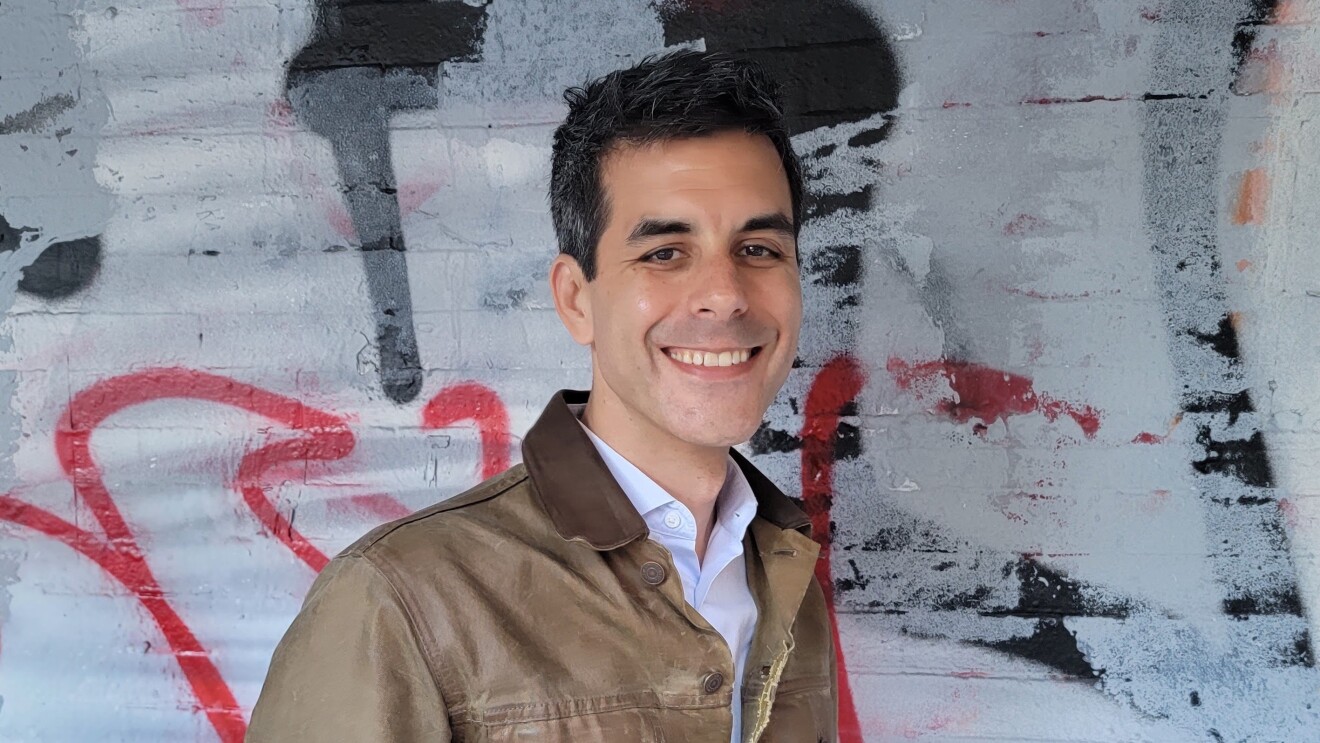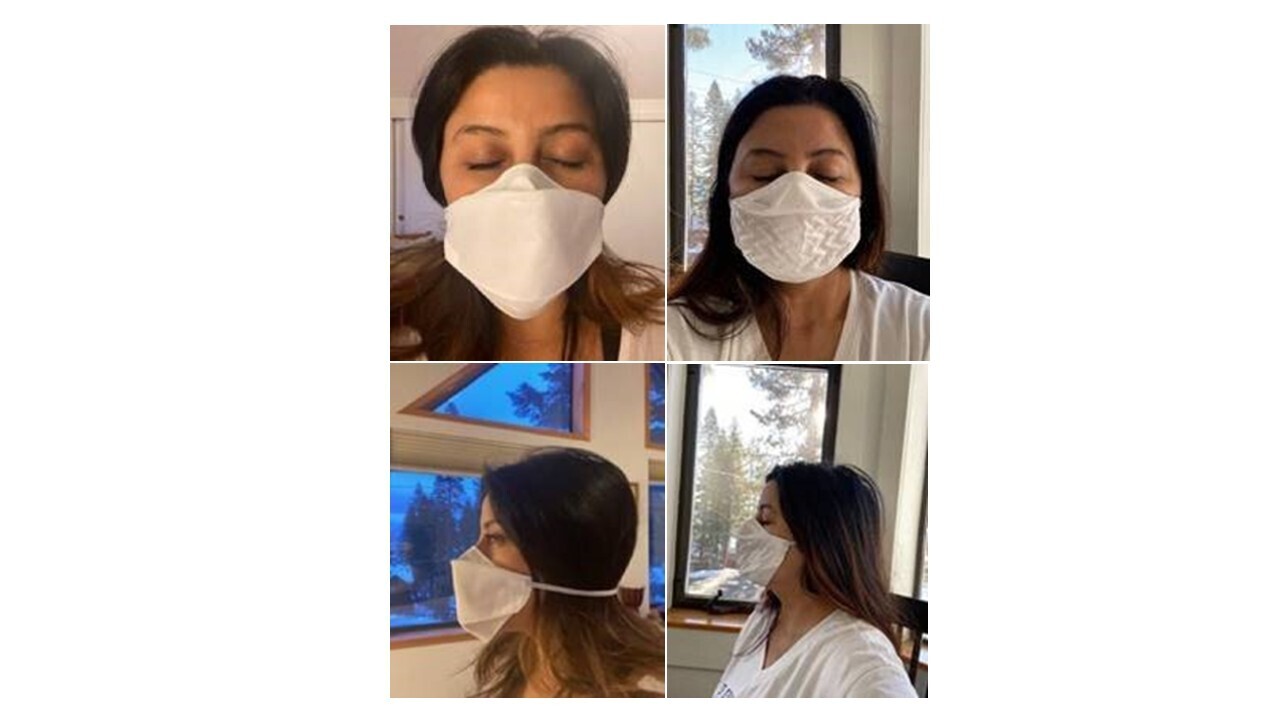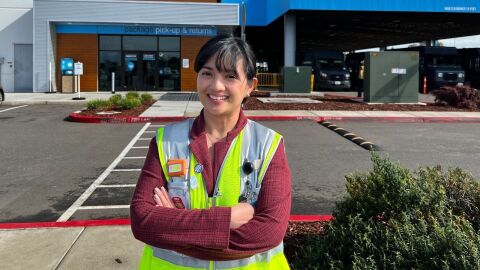In July 2020, the COVID-19 pandemic was causing people to frantically search for personal protective equipment. They needed to work, go to the grocery store, and do other essential activities while minimizing their risk of exposure to the virus. Adam Siegel, a principal engineer at Amazon, was one of those people.
With a passion for thinking big, Siegel decided to research the effectiveness of his own face mask. He discovered that many people wearing a non-N95 mask weren’t protected from inhaling the aerosol water droplets that contain and transmit the COVID-19 virus.

“You really want to be wearing an N95 mask if you want the best protection from the virus and from air pollution. But for many people, these masks pinch, are stuffy, or just don’t fit comfortably,” said Siegel. “I thought that if we could make an N95 mask that is custom fit to the face like a glove, is easy to breathe through, and comes in a style that makes it look more like an item of apparel versus a medical device, people would really like it.”
Siegel set out to innovate and worked on developing a new mask, at first as a side project. After a few weeks, he realized he was on to something. He enlisted the help of several other Amazon employees with expertise in industrial design, robotics, manufacturing, and workplace health and safety.
Due to safety protocols and Amazon’s worldwide workforce, Siegel and his team mostly collaborated virtually. Team members also navigated different time zones, with some working overseas in Barcelona, Taipei, Shenzhen, and London, and in the U.S. in Austin, Minneapolis, Boston, Seattle, and northern California.
At the time I was pulled in, I had many family members in India who had contracted COVID-19, so this was personal for me.
Sean Maylone, a designer of more than five years at Amazon, joined the project in the early stages to assist Siegel with prototyping the mask. Based on his previous work, Maylone was experienced in being able to tell what a product would look like in 3D.
“My wife and I were taking COVID-19 very seriously and valued protection over comfort, so I always wore a N95 mask if I was indoors,” said Maylone. “The survey feedback we commissioned showed that people’s top priority for a mask was protection, so this encouraged me to keep iterating to get the design just right, knowing that others felt the same way I did.”
Not all masks fit every face the same, so the team used a computer database of 2,400 images of faces to understand the subtle differences. The team considered various characteristics, including people’s gender, age, and ethnicity. Using this data, the team created six different mask sizes—which contrasted with the general “one size fits all” approach of many masks on the market.

As a final step, the team tested their new designs by manufacturing more than 100 prototype face masks and sending them to people around the U.S. and collected critical customer feedback.
As a result, the team created the Amazon PerfectFit Mask, which is designed for anyone—including medical professionals—seeking all-day protection from viruses and air pollution. The mask fits just as comfortably as a conventional cloth-based mask, but it is designed to reduce the inhalation of aerosol water droplets that may contain viruses and other microscale pathogens by 10 times or more.
Tushar Mahale, a senior manager for 3D printing at Amazon, was brought in to assist with development of the mask prototype.

“At the time I was pulled in, I had many family members in India who had contracted COVID-19, so this was personal for me,” said Mahale. “I wanted a mask that would protect the person wearing it, and not just others, so I was passionate about developing a protective, comfortable mask.”
The Amazon PerfectFit Mask leverages several key technologies to achieve improved performance, comfort, and breathability. Several features set the mask apart from others, including its use of N95-grade meltblown polypropylene to filter out 95% of airborne particles; its availability in six different sizes, enabling better fit to a wide variety of face shapes; soft and cooling fabrics with either an adjustable head strap or ear loops to achieve a gentle pressure against the face; and the use of a patent-pending folded-paper design to improve airflow and breathability.

Moreover, the researchers found that it was possible to inkjet colorful patterns and images directly on the surface of the mask, making it possible to build a mask that looks more like an item of clothing compared to current N95 masks.
Eliot Kim, a principal industrial designer on Amazon’s Echo Frames team, also offered his experience to the team.
“We were trying to solve a very urgent problem and move fast while doing it,” said Kim. “One of our concepts was inspired by origami paper folding, which is essentially the concept of taking a large volume and shrinking it down through paper folds. We realized this could be very ideal for our design so that people had more surface area, making breathing easier.”
In April 2021, the Amazon PerfectFit Mask team decided to enter the Department of Health and Human Services Mask Innovation Challenge. Out of 1,448 submissions, the Amazon PerfectFit Mask was awarded as one of only 10 Phase 1 winners with a prize of $10,000. Siegel and his team donated the prize money to the University of Washington Medical Center for COVID-19 research.
“The Amazon PerfectFit Mask project has been 100% a team effort, and all of us were excited and honored that the mask was selected as a winner,” said Siegel. “But this is just the first step—we are still improving our design and exploring options to start producing this mask at-scale for our employees and customers. In the end, the most important thing is getting the product out into the world. If we can make a more comfortable, self-protecting face mask, that’s a benefit to us all.”




















